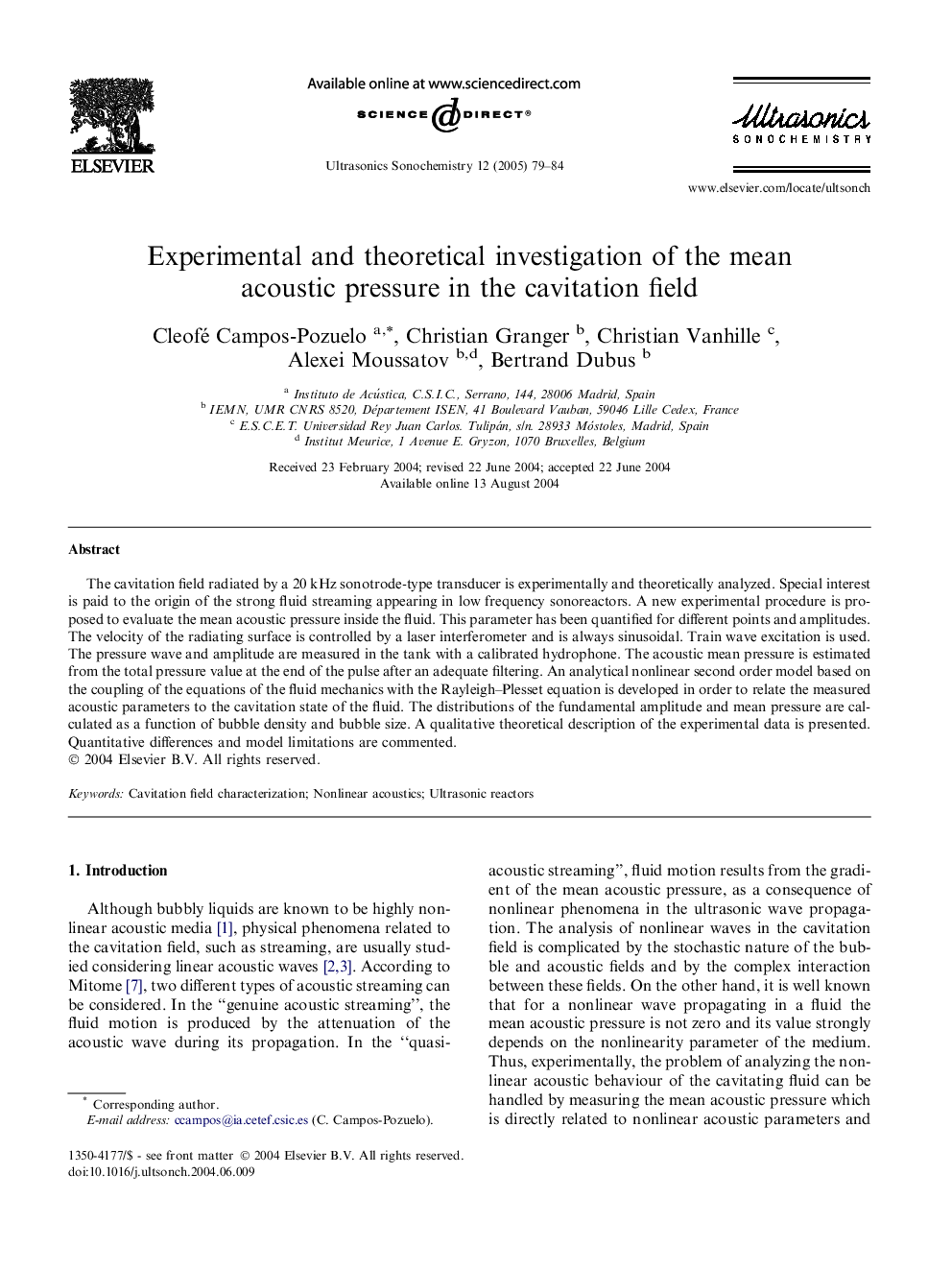| Article ID | Journal | Published Year | Pages | File Type |
|---|---|---|---|---|
| 9758850 | Ultrasonics Sonochemistry | 2005 | 6 Pages |
Abstract
The cavitation field radiated by a 20 kHz sonotrode-type transducer is experimentally and theoretically analyzed. Special interest is paid to the origin of the strong fluid streaming appearing in low frequency sonoreactors. A new experimental procedure is proposed to evaluate the mean acoustic pressure inside the fluid. This parameter has been quantified for different points and amplitudes. The velocity of the radiating surface is controlled by a laser interferometer and is always sinusoidal. Train wave excitation is used. The pressure wave and amplitude are measured in the tank with a calibrated hydrophone. The acoustic mean pressure is estimated from the total pressure value at the end of the pulse after an adequate filtering. An analytical nonlinear second order model based on the coupling of the equations of the fluid mechanics with the Rayleigh-Plesset equation is developed in order to relate the measured acoustic parameters to the cavitation state of the fluid. The distributions of the fundamental amplitude and mean pressure are calculated as a function of bubble density and bubble size. A qualitative theoretical description of the experimental data is presented. Quantitative differences and model limitations are commented.
Related Topics
Physical Sciences and Engineering
Chemistry
Chemistry (General)
Authors
Cleofé Campos-Pozuelo, Christian Granger, Christian Vanhille, Alexei Moussatov, Bertrand Dubus,
